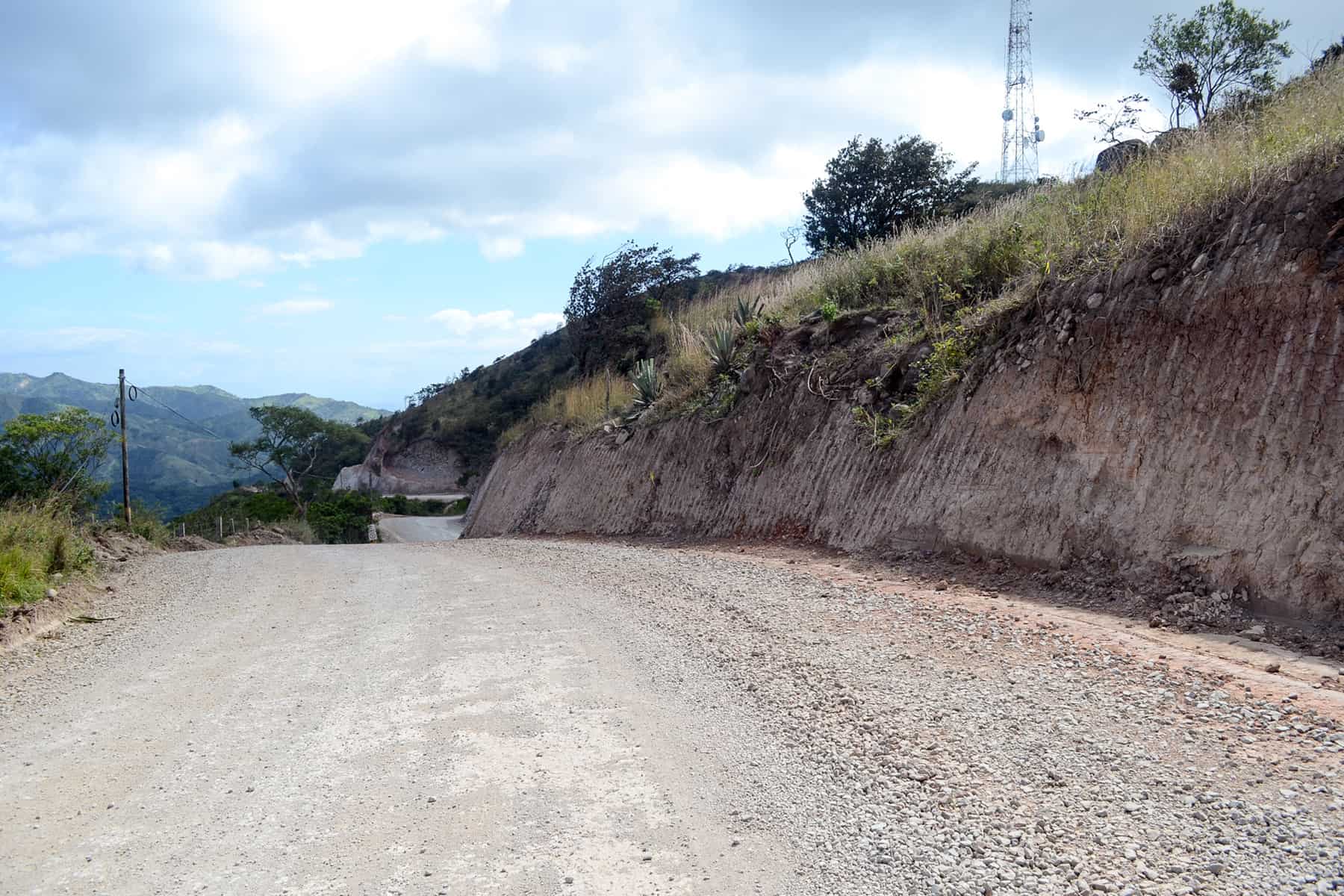After years in the works, the project to expand and improve the road to Monteverde, one of Costa Rica’s most popular tourist destinations, is 65 percent complete.
Still, major improvements are needed, an evaluation by the University of Costa Rica’s National Structural Materials and Models Laboratory (LANAMME) recently concluded.
The National Roadway Council (CONAVI) currently is investing ₡2,5 billion ($4.6 million) to expand to two lanes the 18-kilometer stretch of Route 606 between Guacimal and Santa Elena, Monteverde, in the Pacific province of Puntarenas.
On a second stage of the project, scheduled for completion in 2016, CONAVI will build an asphalt road to replace the current gravel one. The project also includes the construction of ditches and guardrails for a total cost of ₡7 billion (some $13 million).
LANAMME’s evaluation warns that the angles of the slopes along the improved road — one of the most important components of the project — could be prone to landslides.
The laboratory also recommends increasing the width of at least two curves which currently aren’t wide enough to allow passage of heavy and large vehicles.
The report notes that comprehensive geological and geotechnical studies need to be carried out to identify the sites most vulnerable to landslides, in order to design and build all needed stabilization and protection measures.
LANAMME also critiqued what it said were insufficiencies in the the road project’s accommodations for wildlife.
The lab’s Infrastructure Program director Luis Guillermo Loría Salazar said that a study carried out jointly with the National System of Conservation Areas found that there are at least 10 sites where the road is missing wildlife crossings “even though CONAVI was informed that underground and aerial crossings should be included in the road’s construction.”
Route 606 crosses biologically-sensitive areas like the Pájaro Campana Biological Corridor, which connects the Monteverde Cloud Forest with mangrove forests along the Pacific coast.
“The connectivity between these very different environments is of great importance for the preservation of several species,” the LANAMME report stated.
To avoid this segregation of habitats, original plans recommended the construction of hanging ropes and tunnels to allow animals to pass, as well as signage warning drivers to watch for animals crossing the road.
Loría said LANAMME had also suggested that CONAVI consider setting aside at least three areas along the road for viewpoints, to take advantage of several tourist attractions in the region.
“We know that business owners in the area are willing to finance the construction of these viewpoints to offer views as far as the [Puntarenas] coastline and the Nicoya Peninsula,” he said.
Despite problems, progress
Despite its criticisms, LANAMME recognized that progress had been made on the road. The report said that excavations to build the second lane are around 85 percent complete. It also noted that work was advancing on installing the 71 planned culverts along the route.
The project began in October 2013 and was scheduled for completion last year. But funding delays, red tape and poor weather conditions affected the original schedule.
This week CONAVI suspended a schedule of temporary road closures that had been in effect since last year to carry out construction work on the route. Starting last Tuesday, transit is open all day but subject to delays depending on the needs of construction crews.
The gravel road to Monteverde has long been narrow and difficult to transit because the original founders of the Quaker community, from Alabama, have fought to keep it that way in order to limit the number of visitors.
Local business owners say they have seen a significant decrease in revenue because of poor road conditions. During the rainy season from May to November it becomes almost impossible to transit, leading to a significant drop in tourist visits. Business leaders say this has forced hotels, restaurants and other businesses to close in recent years.
In 2013 community groups and residents of Monteverde started a series of public demonstrations and road blockades demanding the government of President Laura Chinchilla build a new and better road. The project was approved later that year.
The area’s most prominent landmark is the Monteverde Cloud Forest Reserve — 10,500 hectares of tropical rain and cloud forests. The reserve is visited by some 75,000 tourists a year, including scientists attracted by its rich biodiversity.






